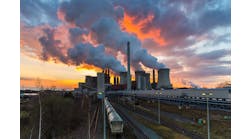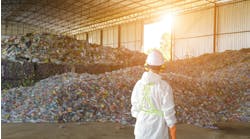The demand for lifetime stewardship of products, including safe and appropriate end-of-life disposal, increasingly impacts the chemical industry. Today’s growing call to maximize the use of resources and minimize the amount of waste — often termed the “circular economy” — adds a new twist and offers chemical makers a chance to reap rich rewards.
Careless and cavalier disposal of products has created severe environmental issues. Discarded plastics, such as single-use containers, shopping bags and drinking straws, exemplify the problem and provide what many see as its most visible and alarming manifestation. As our March cover story, “Industry Tackles Plastics Plague,” pointed out, chemical makers and other firms are starting to address that issue, both through collaborative efforts and individually.
Initiatives include work to convert used plastics into feedstocks for new plastics and chemicals, other raw materials for manufacturing, as well as fuels for transportation and other uses. Researchers are exploring a broad variety of options; for instance, May’s “Upcycling Promises to Pare Plastics Pollution,” describes a process that combines single-use polyethylene terephthalate (PET) beverage bottles with bio-based materials such as muconic acid to create fiber-reinforced plastics (FRP) with higher market value than the PET itself and better strength than conventional FRP.
“Advanced plastics recycling and recovery technologies have the potential to revolutionize the way we make, use and reuse our plastic resources,” believes Steve Russell, vice president of plastics at the American Chemistry Council (ACC), Washington, D.C.
Success can lead to substantial economic benefits according to a report, “Economic Impact of Advanced Plastics Recycling and Recovery Facilities in the U.S.,” that ACC issued in late March.
While 3.1 million tons of post-use plastics were mechanically recycled in the United States in 2015, 26.0 million tons of such material were sent to landfills that year, according to U.S. Environmental Protection Agency data, notes ACC.
The report uses what it calls a conservative assumption, i.e., recovery and processing of 25% of landfilled material. This amount of material would support operation of 260 new plastics recycling and recovery facilities, it states. To come up with that estimate, ACC developed a “model” representative facility. This relies upon pyrolysis and catalytic depolymerization and can handle comingled mixed plastics. However, ACC adds that other technologies such as gasification also may make sense.
The model facility requires a capital investment of $36 million and annually can process 25,000 tons of mixed plastics to make 82,500 bbl of diesel, 41,000 bbl of naphtha and 2,000 mt of waxes.
These facilities would result in 38,500 jobs — 9,400 at the sites themselves, 15,100 at supply chain partners, and the remainder spurred by the spending of those workers, the report estimates. This represents a $2.2 billion increase in annual payrolls, says ACC.
Moreover, U.S. economic output would rise by $9.9 billion, notes the report. Increased output at the new recycling and recovery facilities would account for $4.1 billion, with the rest of the gain stemming from the impact on suppliers and worker spending.
This added dimension to stewardship offers industry an opportunity to do well by doing good.

